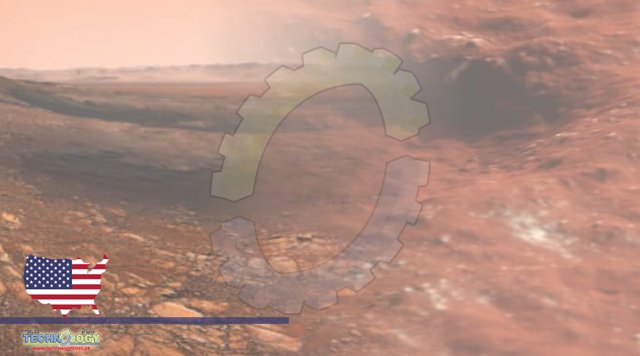Surface of Mars, Scientists thought the InSight spacecraft had recorded some major marsquakes, but with another NASA mission’s help, they found what had really shaken up the red planet.

The exquisitely sensitive seismometer on NASA’s InSight lander dutifully recorded the burst of seismic vibrations and then dispatched the data, a gift of science, to Earth the next day. The InSight scientists were busy celebrating the holidays. When they studied the tremor in detail in early January, it looked different from the more than 1,000 marsquakes that the stationary spacecraft had recorded during its mission to study the insides of the red planet. “It was clearly a seismic event, and it was a big seismic event,” said Mark Panning, the project scientist for the InSight mission. “And we were excited about it right away.” In scientific papers published Thursday, scientists using data from two NASA spacecraft reveal that the seismic event was not the cracking of rocks from the internal stresses of the red planet. Instead, it was shock waves emanating from a space rock hitting Mars. , The discovery will help scientists better understand what is inside Mars and serves as a reminder that just like Earth, Mars gets whacked by meteors too. Mars lacks plate tectonics, the sliding of pieces of the crust that shapes the surface of Earth. But marsquakes occur nonetheless, driven by other tectonic stresses like the shrinking and cracking of the red planet’s crust as it cools. The largest marsquakes are modest by Earth standards. The December shaking registered as among the most powerful that had been recorded, at a magnitude of 4. But it did not occur in the tectonically active region where most of the bigger quakes have been observed. Most crucially, the Christmas Eve seismic event was the first time that surface waves — vibrations traveling along the outer crust of rocks at the surface of Mars had been detected. For all of the other marsquakes, InSight’s seismometer had only observed what are known as body waves, vibrations traveling through the planet’s interior.
This remained a mystery until two months later when scientists on a different NASA spacecraft the Mars Reconnaissance Orbiter discovered that this seismic event was not a marsquake after all. It was instead the thunk of a space rock hitting Mars. It was not a tiny space rock either, estimated at somewhere between 15 and 40 feet in diameter, said Liliya Posiolova, the orbital science operations lead at Malin Space Science Systems in San Diego, which built and operates two of the Mars Reconnaissance Orbiter cameras.Surface of Mars, The impact released the energy equivalent to somewhere between 2.5 and 10 kilotons of TNT, Dr. Posiolova said. (The atomic bomb dropped on Hiroshima at the end of World War II was the equivalent of 15 kilotons of TNT.) It left a crater wider than a football field. During a NASA news conference on Thursday, Ingrid Daubar, a planetary scientist at Brown University who leads InSight’s impact science working group, said a meteor this big enters Earth’s atmosphere about once a year. “We see those pretty regularly,” Dr. Daubar said. “But because Earth has a thicker atmosphere, asteroids of this size burn up and are generally pretty harmless.” Scientists including Dr. Panning, Dr. Lognonné, Dr. Posiolova and Dr. Daubar reported the findings in two articles published on Thursday in the journal Science. When InSight a shortening of Interior Exploration using Seismic Investigations, Geodesy and Heat Transport — landed in November 2018, scientists expected to observe not only marsquakes but also a few meteor impacts a year. Instead, for more than three years, they saw no meteor strikes at all in the seismic data. That indicated a shortcoming in their knowledge of the Martian crust and in the computer models simulating expected seismic signals. Last month, scientists reported identifying four small meteor strikes within a couple hundred miles of InSight based on chirps of sound as rocks entered the Martian atmosphere.
Source: This new is oriignally published by nytimes